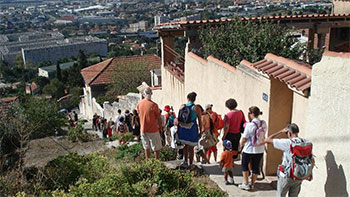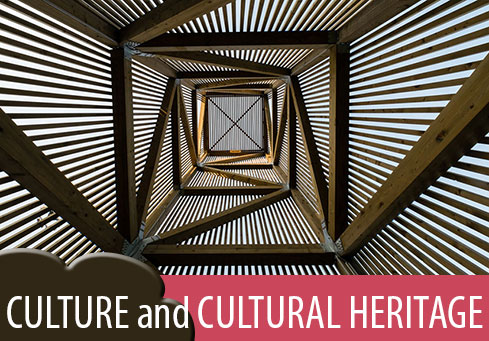Faro Spotlights

These actions actively investigate the possible role of heritage in addressing societal challenges. Every year, the Secretariat identifies specific areas and practices in order to analyse and make subsequent recommendations to promote these actions in the member States. In previous years, some spotlights were Roma communities, migrant communities, Jewish heritage as well as populism.
The Faro Convention methodology offers a distinctive approach to address the challenges generated by dynamic interactions between peoples, places and their stories. The methodology bases its work on the premises that diversity is fundamental to survival, and in some cases, it may lead to conflictual situations, which are considered natural. It argues that such conflictual situations can be transformed through a constructive intercultural dialogue with an active engagement of stakeholders involved, and heritage plays an important role in this process. The contextual structure of this methodology is embodied in the identification of a common ground; working towards a mutual understanding; attempting to restore respect for dignity and multiple identities; and redefining and redesigning relationships.
The methodology focuses on the main ingredients of commons, narratives and cooperation, considering heritage as a social, economic and political resource. It works with the local dynamics and rhythm in line with the principles of social inclusion, human rights and community well-being.
Faro Convention narratives
It is the first step in the methodology, with the idea of acknowledging and understanding the existence of diverse narratives for a given heritage asset. Work around multiple narratives is about a constructive intercultural dialogue process where the importance of many narratives are understood and articulated through various activities. This process can be very delicate and requires the involvement of all stakeholders to ensure that all voices are heard – regardless of whether they are controversial and may not accommodate the opinion of the majority culture.
Shared vision for action
Once the communities agree on the existence of many narratives, and are willing to hear other versions (establishment of a common ground), the process moves towards the identification of a common thread where there is a minimum common denomination. This step requires a carefully structured dialogue process in order to develop a shared vision on the heritage asset in focus. At times, this may last a considerable amount of time where confidence building measures need to be taken through a number of actions. It further requires a certain level of maturity of self-evaluation, mutual understanding and willingness to share a vision.
Common point of action - projects
This step focuses on the elaboration and concretization of identified points into an action, either in the form of a programme or project with particular emphasis on social inclusion, education, local economic development or anti-discrimination measures. Through these actions, confidence is rebuilt and possible new narratives are produced that will trigger positive social change.
Towns/villages/territories 2016
- Bilbao (migrant communities and heritage)
- Ostroh (Jewish heritage)
- Viscri (Roma community and heritage)
Towns/villages/territories 2017
- Forli (populism, propaganda and heritage)
- The Faro Convention at work in Europe: selected examples
- The Faro Convention’s role in a changing society: building on a decade of advancement
- People, places, stories - Faro Convention inspired experiances
- Brochure - Action for a changing society
- Polish civil society and the aims of the Faro Convention
- Heritage and Beyond
- European Manifesto on Multiple Cultural Affiliation
- Dividing lines, connecting lines: Europe's cross border heritage



